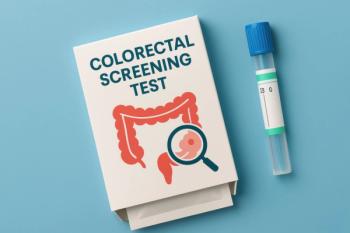
Pandemic Mitigation Efforts May Have Aggravated Pediatric T1D Presentation
Study results indicate COVID-19 transmission mitigation efforts may have led to delayed diagnoses of type 1 diabetes (T1D) in Finnish children, resulting in more cases of diabetic ketoacidosis at presentation.
Throughout the COVID-19 pandemic, more Finnish children with
Although reports suggested an increase in the number of children with newly diagnosed T1D throughout the pandemic, due to the lack of epidemiological studies on the matter, “it is unclear whether there is a true increase in the T1D incidence or rather an exacerbation of the disease presentation,” they explained.
Finland currently has the highest incidence of T1D in the world, and during COVID-19, the researchers noticed more children were admitted to the pediatric intensive care unit (PICU) at Helsinki University Hospital (HUH) for newly diagnosed T1D, beginning in May of 2020.
To determine whether T1D occurrence had increased or disease presentation at diagnosis worsened, the authors conducted a retrospective cohort study using datasets of children who received their T1D diagnosis between April and October 2020. Findings were then compared to rates seen between April and October of 2016 through 2019.
One dataset included all children admitted to the PICU at HUH for new-onset T1D with severe DKA while the second data set consisted of all children prospectively enrolled in the Finnish Pediatric Diabetes Registry (FPDR) from the HUH district.
Information on patient characteristics, duration of symptoms, length of stay, and biochemical findings upon presentation was included in the final analysis.
The researchers found:
- The number of children admitted to the PICU due to new-onset T1D increased from an average of 6.25 admissions in 2016-2019 to 20 admissions in 2020 (incidence rate ratio [IRR], 3.24; 95% CI, 1.80-5.83; P = .0001)
- On average, 57.75 children were registered to the FPDR in 2016-2019 compared with 84 in 2020 (IRR, 1.45; 95% CI, 1.13-1.86; P = .004)
- Thierty-three of the children who got their diagnosis in 2020 were analyzed for SARS-CoV-2 (the virus that causes COVID-19) antibodies, and all were negative
- During the pandemic period, 84 children with newly diagnosed T1D from the HUH district were registered to the FPDR compared with 53 to 62 (mean, 57.75) children each year in the prepandemic periods from 2016 to 2019
Because none of the children had SARS-CoV-2 antibodies, the researchers concluded COVID-19 was not the primary trigger for more severe presentation of T1D or for the increase in children with a T1D diagnosis, they explained.
Findings are also in line with increased incidence of DKA in children with new-onset T1D in Italy, Germany, the United Kingdom, and Australia during the COVID-19 pandemic.
“A longer follow-up is needed to confirm the change in the T1D incidence. Furthermore, we cannot exclude the possibility that the pandemic could have influenced the participation or recruitment to the FPDR,” the authors wrote.
In addition, the potential association of COVID-19 with either increasing incidence of T1D or more severe disease presentation needs to be addressed as T1D may be triggered by viral infections in susceptible individuals, they added.
Many patients admitted to the PICU were symptomatic for longer periods of time compared with patients admitted in previous years. Furthermore, regardless of high or low infection rates in certain geographic areas, data showed COVID-19 infection control measures led to severe delays in the diagnosis and treatment of critically ill children.
The researchers noted that during the start of the pandemic, their hospital’s pediatric emergency department visits dropped by 45%. “Social distancing measures, prioritization of COVID-19 infection control in health care, and, possibly, unfounded parental fears of their child contracting COVID-19 seem to have needlessly impaired the functioning of the health care system,” they explained.
Should future waves of the pandemic occur, the authors stressed the importance of balancing social distancing promotion to the public against risks of this advice to families with children. “Health care providers must learn to prioritize their functions so that patients at risk for critical illness are not missed. Otherwise, children continue to be at risk of becoming collateral damage of infection control measures designed to protect adults,” the researchers concluded.
Reference
Salmi H, Heinonen S, Hästbacka J, et al. New-onset type 1 diabetes in Finnish children during the COVID-19 pandemic. Arch Dis Child. Published online May 27, 2021. doi:10.1136/archdischild-2020-321220
Newsletter
Stay ahead of policy, cost, and value—subscribe to AJMC for expert insights at the intersection of clinical care and health economics.













































